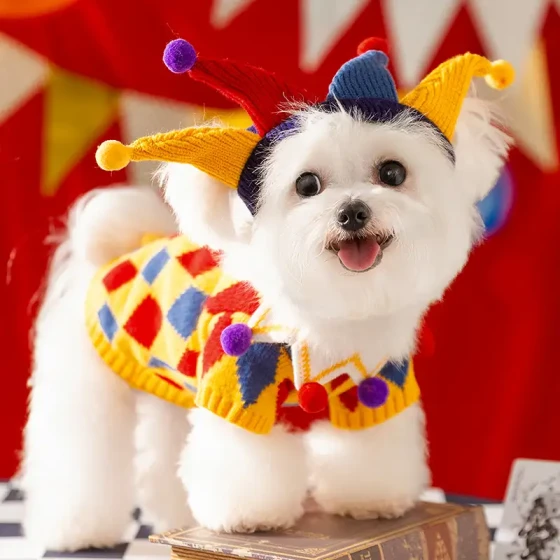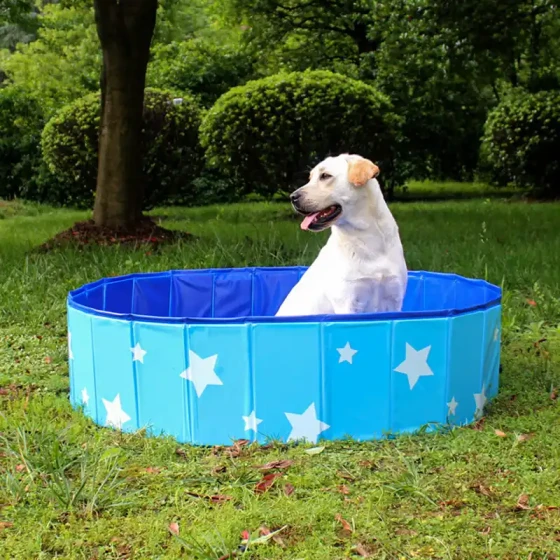How to Choose a Scottish Collie
The Scottish Collie, also known as the Collie Shepherd Dog, originates from the United Kingdom. It was originally a low-grade dog until it became famous after receiving praise from Queen Victoria. Later, after crossbreeding with the Russian Shepherd Dog, it became noble and hesitant, but it truly gained worldwide fame through the successful movie Lassie.
Shepherd Dog
1. Morphological Characteristics of the Scottish Collie
The male Scottish Collie has a shoulder height of about 24–26 inches and weighs about 60–75 pounds. The female has a shoulder height of about 22–24 inches and weighs about 50–65 pounds.
The head is a crucial part of the Scottish Collie. A head that harmonizes with the overall body proportions should appear light. A heavy head cannot express the necessary expressions of joy, alertness, and intelligence. From any viewing angle, the head shows a distinctly slanted wedge shape, always giving an extremely coordinated impression, with clear, smooth, and delicate contours.
The Scottish Collie's eyes are almond-shaped, neither too large nor protruding. The eye color is dark black, giving a clear, happy impression, showing intelligence and curiosity, especially pronounced when the ears are upright.
The ears are proportionate to the head size. They naturally have a semi-erect posture; when at rest, the ears fold forward, and when alert, the ears stand up on the head.
The neck is sturdy, neat, muscular, and heavily coated with decorative fur. It has an appropriate length, held upright, with a slightly arched neck, showing pride. The erect posture better showcases the decorative fur.
The body is strong, solid, muscular, with the body length slightly greater than the height. The ribs are well expanded, and the chest depth reaches the elbows. The back is solid and level, supported strongly by the thighs, with a sloping croup forming a perfect arc.
The front legs are straight, muscular, with sufficient bone mass, coordinated with the overall body. The hind legs are muscular and powerful. The paws are relatively small and oval-shaped. The paw pads are thick and tough, with tightly arched toes.
The Scottish Collie's gait is steady, with the paws landing very close to each other on the ground. The elbows do not turn outward; the gait has no ups and downs, no pacing, and no rolling movements. When running, the hind legs provide strong explosive force.
The tail is moderate in length, extending to the hock or lower. When resting, the tail hangs down, but the tip of the tail twisting upward or forming a swirl is a feature of this breed. When the dog is moving or excited, the tail is happily raised but should not go higher than the back line.
The coat is a great honor for the Scottish Collie. Except for unexpected positions on the head and legs, the fur is abundant. The undercoat is thick and soft, close to the body so that it is difficult to see the skin even when parting the fur. The mane and decorative fur are short and smooth. The fur on the tail is exceptionally abundant, and the fur on the hips is long and dense.
The Scottish Collie comes in four colors: yellow and white, tricolor, mantle, and white. Yellow and white are mainly yellow with white patches. Tricolor is mainly black, also with white patches like yellow and white, with tan shading on the head and legs. “Mantle” is a mottled or marbled color, usually bluish-gray and black as primary colors, with white patches like yellow and white, usually having the same tan shading as tricolor. “White” is primarily white, preferably with yellow, tricolor, or mantle patches.
2. Personality Traits of the Scottish Collie
The Scottish Collie is extremely intelligent, has an excellent temperament, is approachable, smart, sensitive, responds well to gentle obedience training, is friendly, and eager to please its owner. It is cheerful, lively, and highly perceptive. Without proper socialization, it may be shy or nervous, gets along well with other pets, but may chase smaller animals. It is best suited as a vigilant watchdog. Energetic outdoors, affectionate towards its owner and cautious of strangers, with excellent guarding skills, it is one of the most popular dog breeds worldwide.
The Scottish Collie is very spirited. Its mood changes with the owner's emotions. Obedience and loyalty to the owner are the greatest expressions of its personality. However, the Scottish Collie may sometimes play small tricks on the owner, requiring proper soothing; otherwise, it can get angry. The sense of responsibility in Scottish Collies is unquestionable; their care for their owner's children rivals that of a nanny, and their alertness to danger is exceptionally keen.
3. Care Knowledge for the Scottish Collie
When cleaning the Scottish Collie, be careful and groom the dog daily to remove stones, weeds, and other debris on its coat. Usually, bath the dog every 10–15 days. In summer, more frequently—every 7–10 days. In winter, dry the dog immediately after bathing with a towel to prevent catching a cold and becoming ill.
Due to the collie's high activity level, daily food intake must be sufficient, but portion control and ensuring adequate water supply are important. Vaccinations should be administered regularly to prevent infections.
The Scottish Collie is very good at running, requiring about an hour’s walk every day and frequent outdoor sunshine. They are an active breed, so before raising a Scottish Collie, be mentally prepared for behaviors like tearing sheets, chewing wires, shoes, etc., which should be kept out of reach. When noticing chewing, educate the dog to develop good habits and reduce damage.
For fur grooming, comb in the direction of hair growth using a specialized pet comb. Especially during shedding season, frequent grooming benefits the dog's coat growth.
4. Feeding Points for the Scottish Collie
The Scottish Collie is relatively obedient and rarely aggressive. As a large dog, both food quantity and exercise levels are relatively high, with higher energy expenditure, so the diet should be adequate.
1. Feeding Guidelines
Food portions should differ according to individual size. Large dogs need about 500–600 grams of meat daily; smaller dogs need about 350–400 grams.
Meat should be cooked and chopped first, then mixed with an equal amount of dry vegetable food (cooked) or biscuits (sugar-free), adjusted with an appropriate amount of water before feeding. Ingredients, especially meat, must be fresh and clean. Feeding utensils must be cleaned regularly, and kennels need frequent cleaning and disinfection.
Feeding should be regular and at fixed times, with mealtime limited to 15–25 minutes. Food and bowls should be removed afterward to cultivate good habits. Clean drinking water should be provided 1–2 times daily, increasing to 2–3 times in hot summers. The Scottish Collie is an active breed, so daily exercise time is necessary, allowing jumping indoors or walking outside, ideally twice daily.
2. Important Points
(1) Do not feed only meat
Some believe feeding dogs the best meat helps them grow strong. Actually, this is not cost-effective and often causes diarrhea and indigestion in most dogs. Puppies require energy that can be obtained from carbohydrates, not just protein from meat, which lacks vitamins A, D, and E.
Excessive meat feeding or feeding only meat to puppies (especially from 3 to 12 months) can cause skeletal problems due to calcium and phosphorus imbalance (too little calcium, too much phosphorus). Feeding only meat may also cause malnutrition and rickets.
(2) Puppies should not be fed milk
Many think giving milk helps puppies grow healthy. However, puppies usually have diarrhea after drinking milk and may develop gastroenteritis because dog milk and cow milk differ greatly. Dog milk is high in fat and protein and low in lactose; cow milk is low in fat and protein but high in lactose. Too much lactose without enough lactase enzyme causes diarrhea.
(3) You can give dogs some calcium powder
Whether purebred or not, dogs should be given calcium powder from puppyhood. Calcium powder, like calcium tablets, is important for bone growth. Calcium deficiency causes abnormal bones and teeth. Especially for large-boned dogs, they need more calcium as puppies. Thus, when feeding puppies, add calcium powder accordingly. Puppies absorb calcium better after eating. How much calcium powder is appropriate? Growing puppies need one scoop per 2.2 kg (about 5 pounds) daily. As puppy weight increases, calcium powder amount should increase proportionally. After age one, growth stabilizes, and the amount is halved to one scoop per 4.5 kg (about 10 pounds) daily. Proper daily exercise is essential to absorb calcium powder; too much calcium without exercise is harmful.
5. Training the Scottish Collie to Follow the Owner Walking
The Scottish Collie is a very elegant and noble-looking dog. Walking with such a beautiful pet behind you is very impressive. However, Scottish Collies are not naturally obedient walkers; this requires training. Owners must specifically train the Scottish Collie to develop a following habit by cultivating it over time, forming a conditioned reflex.
1. Cultivate the Scottish Collie's obedience. Simply put, make it regard you as the only owner and be loyal and obedient. To achieve this, the owner must show leadership, not through harsh punishment but with clear rewards and punishments. Take care of its daily life and properly guide it to develop good habits, making it understand that you have the right to manage its life and thus see you as the owner.
2. After the Scottish Collie recognizes you as the owner, it will obey and be loyal. Then, you can start following training. Since the dog has developed obedience habits, it will perform stably and accept training more easily. This reduces the difficulty and duration and ensures good training results.
3. During training, it is best to use a leash. Initially, find a quiet and spacious area. Command the dog to sit quietly beside you, then start walking while giving the "walk" command. At the beginning, the dog may not be familiar with the command, so gently pull the leash to indicate following your pace. As the dog gets used to it, try removing the leash and train for off-leash following.
6. Correcting the Scottish Collie's Habit of Jumping on People
The Scottish Collie's habit of not liking to jump on people is not good. It looks elegant and beautiful, but jumping on others without reason leaves a bad impression. What should you do if your Scottish Collie jumps on people, and how to stop and correct it?
Strictly speaking, dogs’ jumping is instinctive. Years ago, dogs lived outdoors, not as pampered pets. To survive in nature, dogs had to fight other animals and worry about daily food. This lifestyle shaped dogs into alert, patient, and aggressive animals.
Although domesticated for years, dogs’ wild nature is hard to change. So, when stimulated, the Scottish Collie may still jump. Also, it may jump to display affection or welcome its owner, which is more friendly than aggressive behavior.
It is difficult to completely change the dog’s jumping habit because of its nature. When facing danger, the dog may jump to protect itself and its family. However, owners should train dogs from an early age to avoid casual jumping. For example, when the dog jumps to show affection, do not respond. Instead, command it to sit and gradually let the dog understand that jumping is not liked. Long-term guidance helps develop a habit of not jumping.
7. Correcting the Scottish Collie’s Habit of Chewing Things
The main reasons for the Scottish Collie chewing things are threefold: first, it is a natural chewing instinct shared by all dogs; second, during teething, oral discomfort causes increased chewing; third, owners who leave dogs unchecked from a young age may foster bad chewing habits.
According to these reasons, targeted methods should be used to address chewing behavior.
First, it's hard to completely change the natural chewing instinct. Owners should tolerate it while preventing it from chewing forbidden items. Provide toys, chew gums, and chew sticks to distract the dog, satisfying its chewing nature and preventing damage.
Second, during teething, owners should be tolerant and understanding. Providing chew toys is essential.
Lastly, owners must cultivate good habits and attitudes. When the dog chews things inappropriately, stop and educate promptly. Purposeful training prevents random chewing, which is the owner's responsibility and duty.
8. Differences Between the Scottish Collie and Shetland Sheepdog
The Scottish Collie and Shetland Sheepdog look very similar, and both are popular pet dogs. Although similar in appearance, they have differences.
1. Size
Adult Shetland Sheepdogs are smaller than Scottish Collies. Standard Scottish Collie adults are about 56–66 cm tall, while Shetland Sheepdogs are about 33–41 cm tall.
2. Head Shape
The Scottish Collie's head is relatively flat, has arched eyebrows, and a rounded muzzle. The forehead is distinct, and the head proportion is balanced and light. From the side, the head narrows toward the black nose from the ears, the back of the skull does not spread out (thick-faced), and the muzzle does not abruptly narrow (not truncated).
The Shetland Sheepdog's head is wedge-shaped, with a straight, long nose. The eyes are almond-shaped, medium-sized, with deep brown color. The ears are smaller, flexible, positioned high. The top of the head appears flat, with a non-protruding back of the skull, flat cheeks, smoothly merging into the rounded muzzle. The nose must be black; lips are tight. Teeth are neat and even, fitting in a scissor bite.
3. Personality
Shetland Sheepdogs are initially wary of strangers and other animals but become friendly with time. They are very affectionate and loyal once familiar with the owner. Emotionally sensitive, they have small dog defensive instincts and alertness.
The Scottish Collie is larger and looks more graceful and powerful. Its temperament is very gentle and friendly, with great charm. It is very loyal and friendly to the owner and attentive to everything around, showing courage and intelligence in handling events.

-560x560.webp)



